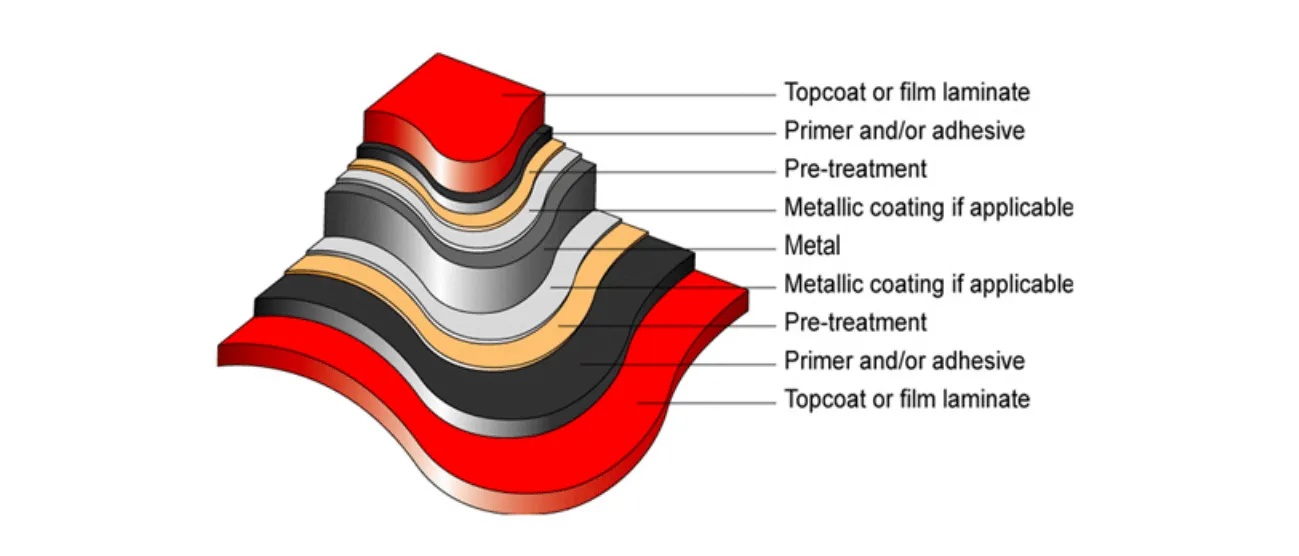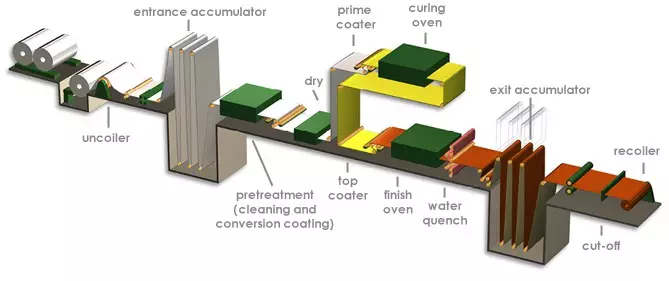The Coil Coating method is used to apply Vestis’ high durability polyester reinforced finish.
Coil Coating, is a continual, automated paint application process, commonly used on aluminium and steel. It’s fast, reliable, and capable of creating exceptionally durable, colour accurate, construction products. Purpose-built machinery, operated in purpose-built facilities, completes the coating process. On average a standard paint line is capable of coating around 200 meters of coil per minute. Unique coil stitching technology allows for continual production; minimising downtime between different coils. Pre-painted aluminium treatments follow strict and controlled manufacturing processes to ensure consistency and quality.
There are two main factors that set pre-coated metals apart from traditional paint coatings. The first, is uniformity of cleaning. Pre-treatment and coatings are conducted and controlled in purpose built manufacturing environments. The second, is layer synergy. From pre-treatment to finished topcoats, each layer compliments and enhances another. While pre-painted metals are often identified by their topcoat, when looking at Coil Coating as a method, it’s important to remember each layer contributes to a product’s success.

Taking a closer look: the production line
It takes 12 steps to transform each Vestis coil from raw aluminium, into a 35 micron, high durability reinforced polyester pre-painted architectural product. The list and diagram below represent a typical Coil Coating production line.
- Coil stitching of the previous coil to the next coil strip in the line
- Strip cleaning
- Power brushing
- Chemical pre-treatment
- Drying
- Dual primer application (applied to both sides of the material)
- 15 to 60 seconds in the first curing oven
- Cooling
- Paint application to both or one side of the material
- 15 to 60 seconds in the second curing oven
- Cooling (to room temperature)
- Re-coiled for sale and distribution

For more information on Coil Coating, visit Europe’s leading body for pre-painted metals, the ECCA, by clicking here.
*This article originally appeared on http://architecturalmetalsaustralia.com.au/


